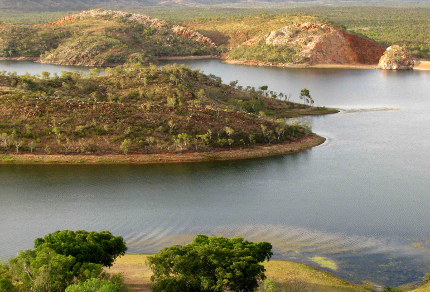At sunrise, Vilis and I departed from Townsville, our destination Mount Isa near the western border of Queensland, approximately half way to Alice Springs. We headed inland on the Flinders Highway, the road’s verges and adjacent savannah rangeland green and lush due to the unusually wet spring the Townsville area has so far experienced. Dense grey cloud swathed Mount Elliot, spilling rain onto its forested peaks, and we crossed the Red River, its dry sand vegetated with paperbark trees listing downstream from strong currents during the Wet. Sulphur-crested cockatoos foraged along the roadsides, their lemon-yellow crests raised. Fork-tailed black kites cruised gracefully above the bitumen, scavenging roadkill.
Past the Mingela Range and turnoff to Burdekin Falls Dam, we drove into new territory and more sparsely-treed savannah. Beyond Charters Towers – Queensland’s great historic mining town – the country opened up even more, the savannah interspersed with shrubby rangeland and grassland. Small communities appeared at fairly regular intervals, a legacy of the days of stage coach runs, when the maximum daily distance horses could pull a coach was around 43 kilometres.1 A range of angular-faceted peaks to the north appeared to have been carved by a sharp-edged tool, and near Pentland, the white trunks of poplar gums and black trunks of ironbarks created a striking woodland mix. West of Pentland, the vivid orange-red of exposed soil had been seemingly soaked up by sprawling eucalypts and painted onto their furrowed trunks below canopies of olive leaves.
Continuing on toward Hughenden, we climbed into the rugged rock landscape of White Mountains National Park, where gums strained upward from out of bare, pale bedrock. Upon exiting the park, a sign stating ‘Welcome to Queensland’s Outback’ greeted us. Again, we drove through savannah, yet it was endlessly varied, the diversity of shapes, textures and colours of leaves and trunks of gum trees – those signature trees of Australia – creating a constantly changing vegetation landscape that eased into grassland.
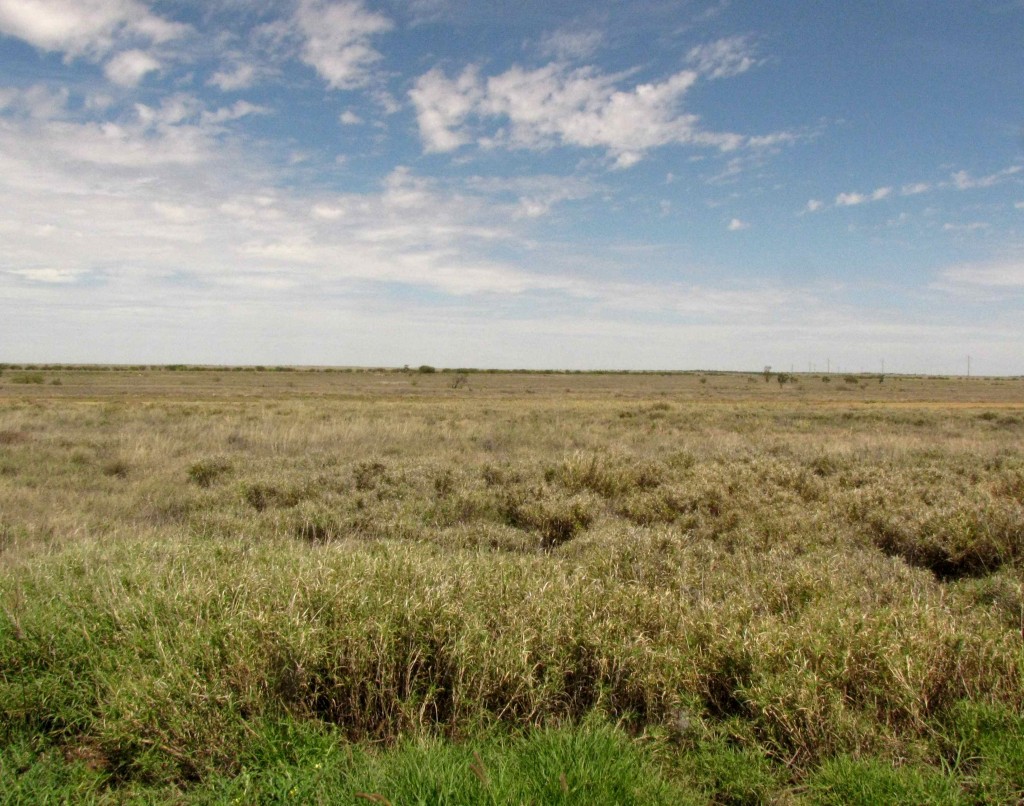
Northcentral Queensland Grassland, between Hughenden and Richmond (© Magi Nams)
East of Hughenden, the village of Prairie lived up to its name, situated within a vast, dry prairie. Vilis commented. “If you didn’t know where you were, you’d think you were somewhere in Canada – maybe in Manitoba or Alberta – until you saw the parrots flying across the road.”
Raptors wheeling overhead and a hot wind blasting us while we ate a picnic lunch halfway between Hughenden and Richmond intensified the similarity to the Canadian prairies so familiar to me as an Alberta girl. This was my first taste of the dry inland of Australia, of the Outback. Gone was the lush green of the coast, with its tropical vegetation. Here, grasslands – some of the state’s richest2 – ruled. Vilis and I imagined explorers and settlers’ wagons moving slowly across the prairie landscape. We also learned – in another striking resemblance to southern Alberta – that this expanse of grassland had, in a different era and climate, been prime dinosaur country and, like the Badlands of Alberta, yields world-class dinosaur and marine reptile fossils of exceptional quality.2
As we drove westward during the heat of the day, it quickly became apparent that without air conditioning, the temperature in the car would have been unbearable. My eyes began to ache from viewing the bright, huge sky and bleached vegetation. We passed through the tidy town of Richmond and drove on toward Julia Creek, the landscape becoming flatter and emptier. It appeared both desolate and dessicated.
Vilis told me that he’d learned in Western Australia that the number of cattle on desert stations is limited by the number of bores station owners can afford to drill, since little water is available on the surface, but exists underground. Similarly, the arid grasslands grading into desert through which we drove were – as an interpretive sign at our lunch stop had informed us – underlain by a vast underground reservoir of freshwater called the Great Artesian Basin. Thus, the cattle stocking to bore ratio likely applied to western Queensland as well.
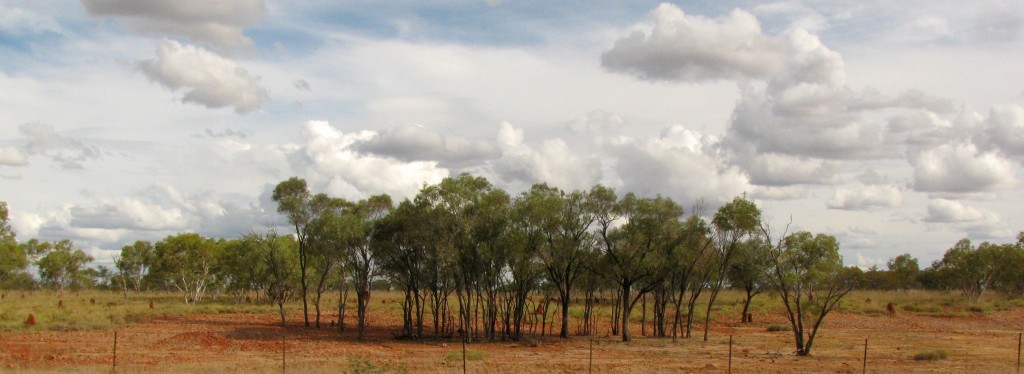
Arid Pasture West of Julia Creek (© Magi Nams)
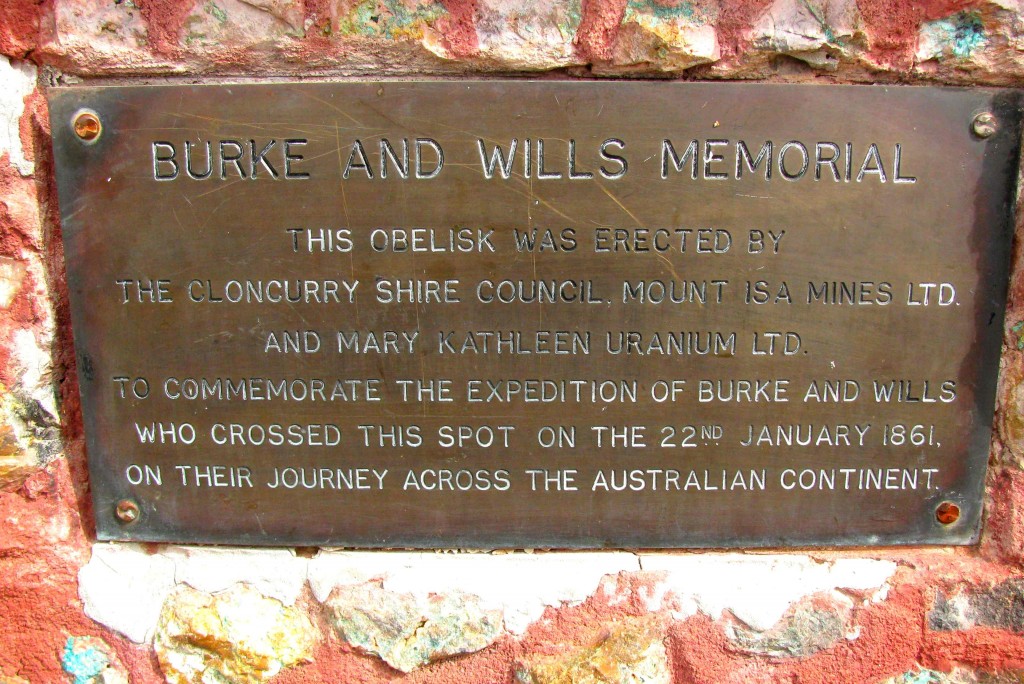
Burke and Wills Memorial (© Magi Nams)
As we neared Cloncurry, the washed-out, flat-horizoned landscape was relieved by jumbled hills and ridges of broken red rock that contrasted vividly with greening acacias and scattered gums. The Barkly Uplands led us west to Mount Isa, now Australia’s largest high-technology mining city, with hundreds of kilometres of underground shafts and tunnels,3 and smokestacks belching mining exhaust into the Queensland skies. West of Cloncurry, we paused briefly at the Burke and Wills Memorial (see September 21 – The Burke and Wills Expedition; http://maginams.ca/2010/09/21/ ) before pushing on to Mount Isa. There, desperate for some exercise, we drove a dozen kilometres to Lake Moondarra, hiked the lakeshore and climbed a rocky hill behind it, and then booked into a caravan park at the edge of the mining town. We were half-way to the Red Centre.
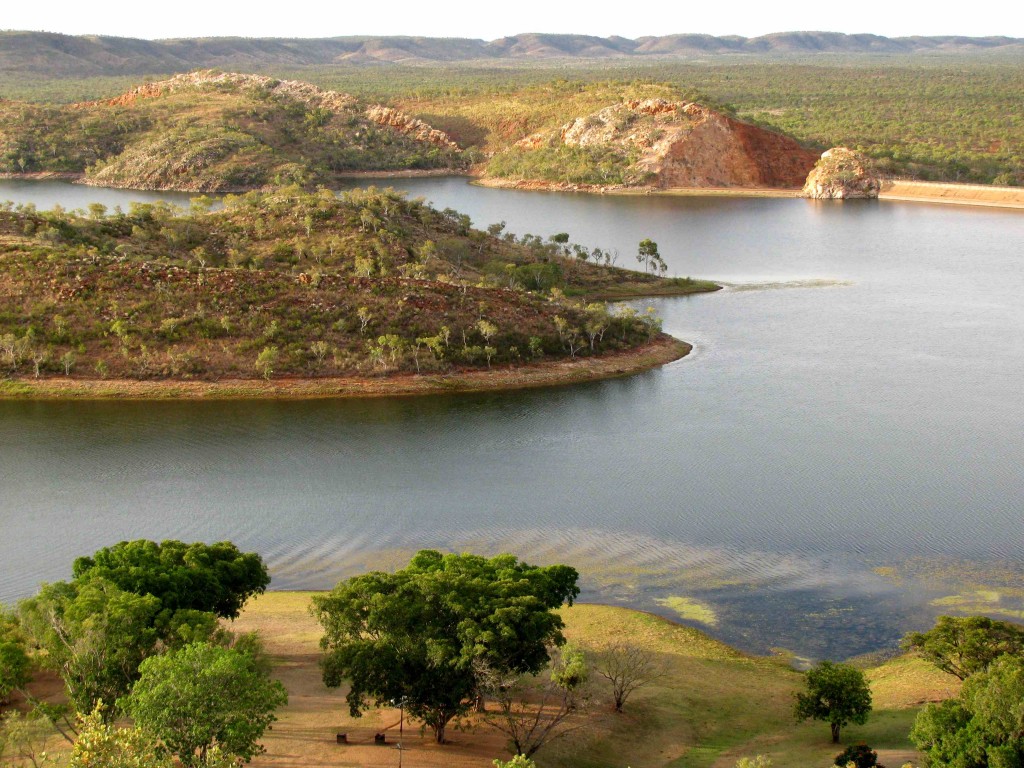
Lake Moondarra, Queensland (© Vilis Nams)
Today’s birds: mynas, rock doves, Australian magpies, magpie-larks, black kites, sulphur-crested cockatoos, whistling kites, apostlebirds, red-tailed black-cockatoos, Torresian crow, crested pigeons, galahs, willie wagtail, yellow-throated miners, glossy ibis, straw-necked ibis, royal spoonbill, little pied cormorant, intermediate egrets, magpie-larks, anhinga, Australasian grebes, black-faced cuckoo-shrike, rainbow bee-eaters, *spinifex pigeons, pheasant coucal, red-winged parrots, dusky moorhens, masked lapwing, reed warbler, peaceful dove. Also observed an agile wallaby. (*lifelist sighting).
Reference:
1. Malcolm Gordon. Outback Australia: A Guide to the Northern Territory and Kimberley. 2000. Little Hills Press, Seven Hills, New South Wales, pp. 68-69; 2. Ibid, pp. 73-74; 3. Ibid, p. 78.

